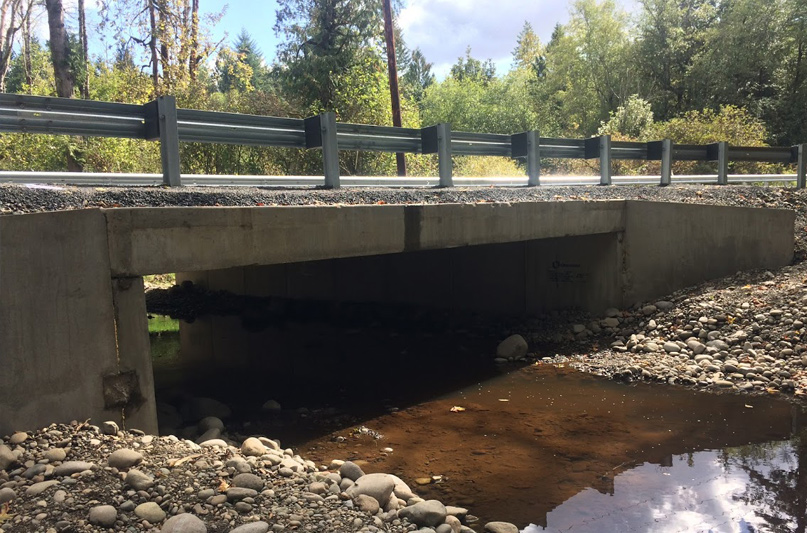
Salmon returning to the Middle Fork of the Newaukum River near Chehalis, Washington, will have an easier time swimming upriver this fall, thanks to a project that will open up two miles of the river by removing barriers to salmon. The project on the Newaukum River was funded by the Brian Abbott Fish Barrier Removal Board and is just one of many projects that will open up 200 miles of rivers all over the state. Half of the projects will increase spawning grounds for Chinook salmon specifically, a key part of endangered Southern Resident orcas’ diet.
“This first project is an incredible achievement for the board, the people of Washington, and our environment,” said Kaleen Cottingham, director of the Washington State Recreation and Conservation Office. “In addition to improving access for fish, these projects also will enhance the roads that cross over them, support public safety, and protect our communities from flooding.”
Salmon recovery efforts have been planned in 20 counties throughout the state. In partnership with the Washington State Recreation and Conservation Office (RCO) and Washington Department of Fish and Wildlife (WDFW), the Brian Abbott Fish Barrier Removal Board focuses on improvements to culverts. Culverts are pipes or other structures that allow rivers to pass under roads. These culverts become obstacles to salmon when they are too high, too narrow, or too steep for fish to pass on their way upstream.
“The projects funded by the Brian Abbott Fish Barrier Removal Board are building on previous fish passage investments by local governments, landowners, and the Washington State Department of Transportation,” said Tom Jameson, WDFW fish passage manager and chair of the Brian Abbott Fish Barrier Removal Board. “We appreciate the Legislature’s continued support of these salmon and orca recovery efforts.”
The Brian Abbott Fish Barrier Removal Board has invested $46.2 million in more than 69 projects statewide since 2014, when the board was founded by the State Legislature. The board coordinates the removal of barriers that block salmon and steelhead from reaching the best spawning areas. The board was named after Brian Abbott, who was a salmon recovery leader, lifelong fisherman, and an executive coordinator of the Governor’s Salmon Recovery Office.
Also on the board are members of the Washington State Departments of Transportation and Natural Resources, Washington State Association of Counties, Association of Washington Cities, the Governor’s Salmon Recovery Office, the Confederated Tribes and Bands of the Yakama Nation, the Confederated Tribes of the Colville Reservation, and the Salmon Recovery Council of Regions. The next projects are in Asotin and Clallam counties and will be finishing up sometime this year.